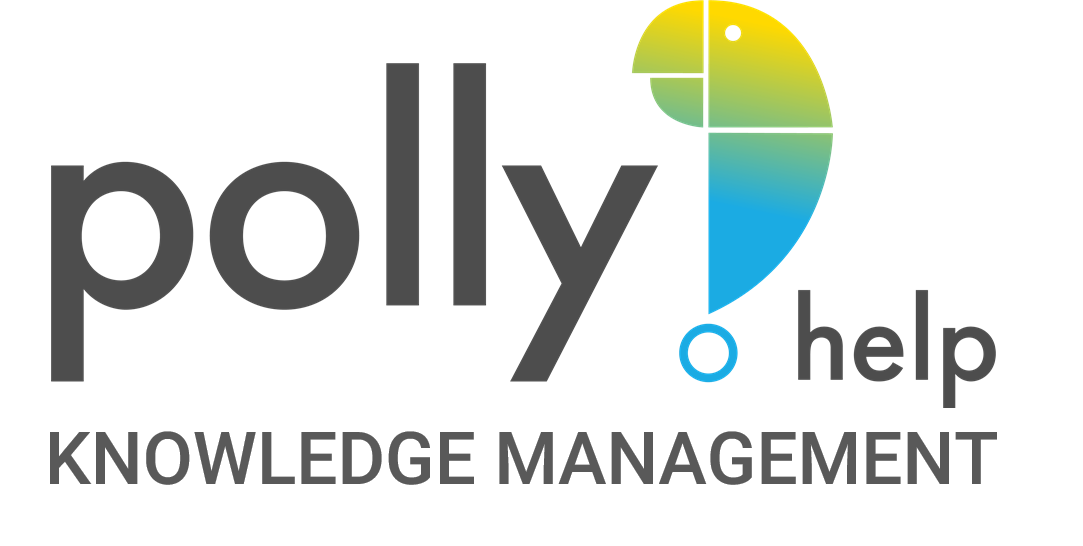In today’s rapidly changing market, implementing knowledge management is key for strategic business growth. With the right knowledge management strategies, companies can enhance their operations. This move towards organizational efficiency and corporate innovation is crucial. Effectively managing knowledge ensures a company stays ahead, creating a fertile ground for efficiency and strategic advancements.
Knowledge management systems go beyond mere data collection; they transform data into actionable insights. Harnessing the workforce’s collective intelligence allows for informed decisions and reduces redundancy. This is essential for sustainable growth in the competitive business landscape of today.
Key Takeaways
- Essential role of knowledge management in strategic corporate growth.
- Benefits of enhancing organizational efficiency through knowledge-centric strategies.
- The critical interconnection between knowledge management and corporate innovation.
- Impacts of knowledge management on informed decision-making.
- Significance of a structured approach to implementing knowledge management.
Understanding Knowledge Management and Corporate Strategy Integration
At the meeting of knowledge management and corporate strategy, unmatched business efficiency becomes possible. The synergy between these aspects is crucial for companies wanting to reach their knowledge goals with strategic planning. Understanding the vital roles this integration plays within a company’s structure is key.
The Role of Knowledge Management in Strategic Planning
Integrating knowledge management into strategic planning is a complex task. It involves a deep dive into a company’s information flow. This allows businesses to boost their strategic planning, adapting operations to market changes while strengthening their knowledge base.
Aligning Knowledge Management with Organizational Goals
Aligning knowledge management with organizational goals is essential. It ensures collective knowledge aims to boost business efficiency and meet strategic targets. Tailoring a knowledge management strategy to an organization’s challenges and opportunities sets a clear direction for success.
| Strategic Focus Area | Knowledge Management Application | Impact on Business Efficiency |
|---|---|---|
| Decision Making | Accessible, organized knowledge repositories | Quicker, more informed decisions |
| Employee Training | Standardized training modules | Rapid skill acquisition and reduced onboarding time |
| Innovation | Cross-departmental collaboration platforms | Stimulated creativity leading to market differentiation |
| Market Analysis | Data analytics and reporting tools | Enhanced understanding of market trends for agility |
A well-developed knowledge management system does more than manage internal info. It drives firms toward a future where every decision is grounded in solid organizational knowledge. This strategic integration gives companies a competitive advantage marked by agility, innovation, and improved efficiency.
The Importance of Knowledge Management Strategies in Modern Business
In the current corporate landscape, business innovation relies heavily on effective knowledge management strategies. By focusing on knowledge retention techniques, firms can eliminate informational barriers. This promotes easy collaboration and access to critical data. Such efforts streamline operations and secure competitive advantage in a fast-paced market.
Emphasizing the role of knowledge management in business innovation reveals its impact on operational efficiency. Effective knowledge management means that the entire organization gains from shared experience and skills. This enhances resilience and agility.
- Fostering a coherent environment where knowledge sharing is spontaneous and encouraged.
- Enhancing productivity through reduced time spent searching for information.
- Amplifying the creativity of teams by providing a diverse pool of ideas and insights.
Knowledge retention is key in protecting a company’s intellectual property, especially in fast-changing industries. It reduces the risk of losing critical expertise. This ensures the corporate knowledge base continues to expand.
A systematic approach is essential for implementing these strategies effectively. It highlights the synergy between different aspects of intellectual capital within an organization:
| Intellectual Capital Component | Impact on Business Innovation | Role in Competitive Advantage |
|---|---|---|
| Human Knowledge | Directs creative capabilities and problem-solving | Empowers employees to drive innovation |
| Structural Assets | Provides a framework for scalability and growth | Enables efficient processes and systems |
| Relational Know-how | Enhances customer relations and service delivery | Builds trust and loyalty with clients and partners |
Knowledge management must adapt to the ever-changing business scene. Thus, applying these strategies strategically is vital for any modern firm wanting to stay relevant and excel.
Implementing Knowledge Management for Competitive Advantage
To gain a competitive business edge, companies must innovate and enhance their knowledge sharing. By integrating knowledge management into their organizational systems, they encourage informed decision-making. This streamlines efficiency and fosters a culture of collaborative learning. Excelling in utilizing collective wisdom not only boosts agility but also strengthens market position.
Knowledge sharing practices are crucial to an effective knowledge management framework. Freely exchanging information across teams creates a foundation for innovation. This exchange of insights allows organizations to navigate market changes effectively and seize new opportunities. It cultivates resilience and attentiveness to emerging chances.
- Collective expertise encourages diverse perspectives and problem-solving approaches.
- Efficient knowledge sharing reduces the risk of task duplication and operational waste.
- Up-to-date information reservoirs augment strategic planning and policy development.
It’s critical to keep knowledge flowing within the workforce. This enables employees at all levels to employ best practices and swiftly adjust to new challenges. Ensuring a dynamic exchange of information empowers professionals to be agile and innovative.
| Knowledge Sharing Component | Benefits to Decision-Making | Impact on Competitive Edge |
|---|---|---|
| Inter-departmental Communication | Higher accuracy in decisions through increased informational context | Agility in operations; ability to outmaneuver the competition |
| Employee Training and Development | More nuanced understanding of company processes and customer needs | Greater innovation and improved service offerings |
| Collaborative Digital Platforms | Real-time feedback loops and adjustments to business strategies | Enhanced market responsiveness and customer centricity |
By focusing on key aspects of knowledge management, businesses prepare to make informed decisions. This lays the foundation for enduring success. The integrated knowledge framework, though unseen, drives a company to remarkable achievements and a prominent industry position.
Creating a Culture of Knowledge Sharing and Collaboration
In today’s changing business scene, developing a knowledge-driven culture is key. It’s about blending collective wisdom and encouraging teamwork across different areas. By doing so, companies unleash their employees’ full capabilities, spurring innovation.
Encouraging Communication Across Organizational Silos
To connect various organizational areas, ongoing, clear communication is crucial. Paths for dialogue and idea exchange help break down barriers to collaboration across silos. This fosters a work culture where knowledge moves freely, empowering employees to align their insights towards shared aims.
Knowledge Sharing Practices and the Impact on Team Dynamics
Adopting key knowledge sharing strategies revolutionizes team dynamics. Knowledge-sharing teams quickly adjust to new developments and tackle obstacles together. They’re more creative, blending different viewpoints to uncover novel solutions. Such collaboration significantly boosts team synergy and performance.
- Leadership support to promote knowledge sharing as a valued behavior
- Incentives and recognition systems for effective knowledge exchange
- Regular interdisciplinary meetings to foster inter-departmental communication
- Knowledge-sharing platforms that are inclusive and user-friendly
- Training programs focusing on the development of team collaboration skills
Building an environment that values knowledge sharing and collaboration elevates a company’s competitive edge. This approach’s effect on team dynamics is profound, forging a strong, united workforce ready for the future.
| Practice | Benefit | Impact on Team Dynamics |
|---|---|---|
| Cross-functional Workshops | Enhances skill diversity | Promotes inter-department understanding and appreciation |
| Shared Digital Workspaces | Facilitates real-time collaboration | Encourages collective problem solving and innovation |
| Mentorship Programs | Expedites knowledge transfer | Strengthens employee relationships and networks |
| After-action Reviews | Provides learning from successes and failures | Creates a culture of continuous improvement and accountability |
A culture centered on knowledge, trust, and collaboration across silos steers a company towards innovation. With these principles, navigating today’s complex business world becomes more manageable.
Knowledge Management Software: Enabling Efficient Information Flow
In today’s fast-paced business environment, managing knowledge effectively is essential. Knowledge management software is key in facilitating efficient information flow. It boosts productivity and supports informed decision-making. Choosing and incorporating the appropriate software is a strategic must, not just a technical need.
Choosing the Right Knowledge Management Tools
Choosing the right knowledge management tools depends on understanding your organization’s specific needs. Factors include the amount of information, the complexity of your knowledge, and your unique use cases. These tools should integrate smoothly with existing systems, building a unified knowledge ecosystem.
- Scalability to grow with your organization’s needs
- Advanced search functionalities for quick retrieval
- User-friendly interfaces to encourage consistent use
- Analytical capabilities to track usage patterns and content efficacy
Integrating Software Solutions into the Knowledge Management Framework
Software integration forms the basis of a vibrant knowledge management framework. Through seamless software integration, staff access accurate information effortlessly, enhancing efficient information flow across departments. It minimizes knowledge transfer issues and boosts teamwork.
- Identify integration points within your existing framework.
- Ensure seamless data exchange between different software platforms.
- Develop a continuous improvement process to adapt to evolving knowledge needs.
- Maintain security and compliance standards throughout the integration process.
Correctly implementing and integrating knowledge management software yields numerous advantages. These include faster access to information, better collaboration, and a significant boost in organizational intelligence.
Maximizing the Benefits of Knowledge Management Implementation
To fully benefit from knowledge management, organizations must foster organizational learning adaptability. This involves establishing systems that encourage ongoing learning and knowledge exchange. These systems promote innovation and strategic expansion. A strong business case for knowledge management is built on its ability to create an agile learning environment. This environment quickly adapts to market dynamics and organizational changes.
A well-designed knowledge management system greatly improves information access efficiency. By streamlining access, employees are equipped to perform better, minimizing delays and speeding up decision-making. Such systems also nurture a culture that prizes innovation and teamwork in problem-solving. This cultural shift is key to driving forward organizational success.
Knowledge management is crucial for protecting a company’s intellectual assets. It ensures valuable employee expertise and insights are retained, even after they leave. This retention helps smoothly integrate new employees by keeping critical institutional knowledge and best practices. Thus, it facilitates a seamless and efficient onboarding process.
- Streamlined access to consolidated organizational knowledge
- Improved decision-making abilities supported by data-driven insights
- Enhanced innovation through shared knowledge and collaborative efforts
- Effectual onboarding and training processes for new hires
- Maintenance of essential knowledge despite personnel changes
The strategic deployment of knowledge management systems lays a solid foundation for adaptability in learning. It creates a milieu of informed spontaneity, aiding in effective decision-making, innovation, and business expansion. As companies navigate today’s intricate industry landscapes, the argument for comprehensive knowledge management strategies grows stronger.
Enhancing Decision-Making and Innovation through a Knowledge-Driven Approach
Adopting a knowledge-driven decision-making strategy involves more than just gathering data. It’s about nurturing creativity and innovation to propel a company forward. With comprehensive information available, employees can unveil inventive solutions and make choices that resonate with the organization’s goals.
Fostering Creativity through Knowledge Accessibility
Fostering creativity in an organization hinges on making information widely accessible. Having easy access to knowledge fuels creative problem-solving and the generation of novel ideas. By tapping into a vast reservoir of information, team members are able to link unique concepts, venture beyond conventional thinking, and craft groundbreaking solutions to difficult problems.
Improving Decision Quality with a Robust Knowledge Base
The caliber of decisions in a company improves dramatically with a solid knowledge base. Knowledge-driven decision-making means choices are well-informed and underscored by thorough analysis of previous outcomes, pertinent data, and specialist advice. This method lessens the occurrence of expensive mistakes and guarantees that decisions are strategic and visionary.
| Benefit | Outcome |
|---|---|
| Informed Risk-Taking | Ability to weigh options based on historical data and insights |
| Increased Innovation | Use of cross-disciplinary knowledge to spur novel ideas |
| Better Problem-Solving | Access to various sources of information to troubleshoot effectively |
| Strategic Planning | Long-term goals are supported by authoritative knowledge and evidence |
The Step-by-Step Process for Developing a Knowledge Management Strategy
Developing a knowledge management strategy is crucial for leveraging an organization’s collective intelligence to foster strategic growth. It starts with a comprehensive knowledge audit. This step examines the organization’s current information and expertise landscape. By doing so, it identifies knowledge gaps and examines how knowledge is created, shared, and used within the company.
After the audit, the next step is defining the business values and objectives that the knowledge management (KM) initiatives will support. This ensures the KM framework aligns with the organization’s strategic goals, making KM a cornerstone of organizational success. This alignment guarantees that the KM planning supports the company’s broader aspirations.
Finally, creating a detailed KM plan is vital. This plan incorporates knowledge management strategies into daily business operations. It outlines a clear roadmap for implementation, focusing on the needs and strengths of the existing KM infrastructure. Goals and benchmarks for evaluating the strategy’s success are also essential. This approach fosters an environment of continuous learning and innovation.





